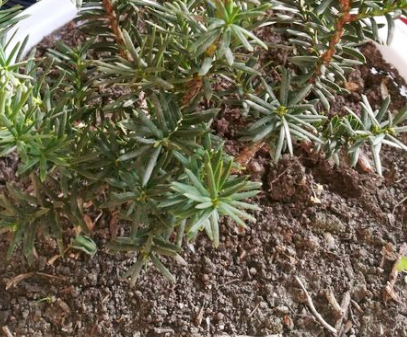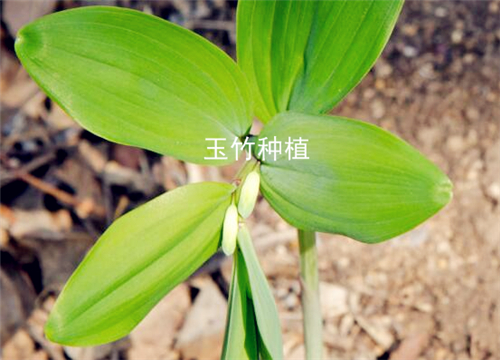Introduction of planting methods and matters needing attention of peacock grass (small marigold)!
Malachite grass, also known as small marigold, red and yellow grass, is an annual herb of the family Compositae. It is very popular because of its bright petals, high ornamental value, strong adaptability and easy to feed. Then the editor will introduce to you the planting methods and points for attention of malachite:
I. introduction to the cultivation of malachite
The flowering period of malachite in southern China is from March to May and from August to December. It takes only 70 days from sowing to flowering, raising seedlings in early spring without heating in the greenhouse, and planting courtyards, flower beds or potted plants after late frost. Under the conditions of protected areas in the middle and lower reaches of the Yangtze River, seeds can be sown all the year round. In the south with a warm climate, seeds can be sown all the year round, while spring sowing is popular in the north. If the seedlings are raised in early spring, attention should be paid to ensuring a certain growth temperature to avoid growth stagnation as far as possible. Sowing should use loose artificial media, bed sowing, box sowing seedlings, conditional can be used to raise seedlings.
Second, the planting method of malachite.
1. Transplant the upper basin: the peafowl seedlings raised with a hole tray should be transplanted into the basin when growing to 2 to 3 pairs of true leaves. In Zhejiang, most of them are accustomed to using 12 cm diameter nutrition bowls, putting the pots in place at one time and not changing the pots again. If the seedlings are sown in an open seedling tray, they should be sowed sparsely, and when there are 2 or 3 pairs of true leaves, the seedlings should be transferred directly to the pot.
2. Light regulation: Peacock grass is a positive plant, which requires sufficient sunlight for growth and flowering, and sufficient light is also beneficial to prevent the overgrowth of plants. However, from July to September in our province, it is necessary to avoid direct sunlight and cool down by shading around noon.
3. Temperature control: the temperature of malachite grass can be reduced from 22 ℃ to 18 ℃ after potting, to 15 ℃ after a few weeks, and to 12: 14 ℃ before and after flowering. This temperature is ideal for forming a good plant shape, but it may be difficult to achieve this condition in practical production. Therefore, generally speaking, as long as it is more than 5 ℃, it will not be frozen, and it can grow well between 10 ℃ and 30 ℃.
4. Water management: the key to the water management of malachite grass is to use the medium with good drainage. Although it is important to keep the medium moist, it is necessary to dry properly before each watering. Of course, the medium can not be too dry and cause the plant to wither.
5. Fertilization method: for peacock grass cultivated completely in artificial medium, 20-10-20 and 14-0-14 fertilizers should be used, and the concentration of 200~250ppm should be applied alternately once every 10 days. When the temperature is low in winter, the use of 20-10-20 fertilizer should be reduced. If the medium is in ordinary soil, the compound fertilizer can be mixed as base fertilizer before the medium is put into the basin. If the fertility is not enough, then apply water-soluble fertilizer.

6. pest control: the common diseases of peacock grass are brown spot and powdery mildew, which are fungal diseases, so we should choose good cultivation, pay attention to drainage and irrigation, remove diseased plants and diseased leaves, burn residual branches, spray rust powder and other fungicides in time.
Matters needing attention in planting malachite grass
The main results are as follows: 1. There are not only single, double, different flower colors and different height varieties, but also marigold of the same genus, and the natural hybridization between them is also easy to degenerate. Varieties with good colors should be selected, sowed and planted separately, and keep a distance of more than 100 meters from other varieties. Seeds are harvested separately and stored separately.
2. The pH value of the medium is too low. The main symptoms are necrotic spots, scorched edges and necrotic growth points on the old leaves. When the pH value is lower than 6.0, it will also cause the deficiency of some trace elements such as magnesium, iron, sodium and zinc. The main solution is to keep the pH value of the medium between 6. 0 and 6. 7 (which can be adjusted by adding 1 pound of lime to 100 gallons of water), and to choose the less sensitive species of malachite.
3. Raising seedlings with low temperature in early spring, if the humidity is too high, epidemic disease is easy to occur. It began to show water stains at the base of the stem, and then necrosis and lodging. Therefore, attention should be paid to raising the temperature and controlling the humidity as much as possible in early spring to prevent the occurrence of diseases.
4. Pay attention to the nutrition at the seedling stage. If there is a lack of fertilizer at the seedling stage and the plant is weak, it will form a small old seedling-that is, the phenomenon of flowering at the seedling stage caused by the lack of fertilizer. Such seedlings often cannot be sold because they cannot form a good plant type, resulting in losses.
Time: 2019-03-13 Click:
- Prev

Yew breeding methods and precautions known as "plant gold" are introduced!
Taxus may not be very familiar to many people. In fact, Taxus is a very precious ornamental plant. It is also an ancient tree species left over from the Quaternary Glacier. Therefore, it has the title of plant gold. As a treasure in flower cultivation, it is liked by many people and wants to be cultivated.
- Next

When is the best time to plant Polygonatum odoratum? Master 6 planting points and yield 10,000 jin per mu!
Upon hearing the name Polygonatum odoratum is related to bamboo, but this Polygonatum odoratum really has nothing to do with bamboo, just a little similar to the leaves of bamboo, is a kind of traditional Chinese medicine, has the effect of lowering three high. Traditional Chinese medicine stores sell its sun-dried finished products, the price is generally about 30 yuan per jin, many drug farmers see the benefits in the middle.
Related
- Fuxing push coffee new agricultural production and marketing class: lack of small-scale processing plants
- Jujube rice field leisure farm deep ploughing Yilan for five years to create a space for organic food and play
- Nongyu Farm-A trial of organic papaya for brave women with advanced technology
- Four points for attention in the prevention and control of diseases and insect pests of edible fungi
- How to add nutrient solution to Edible Fungi
- Is there any good way to control edible fungus mites?
- Open Inoculation Technology of Edible Fungi
- Is there any clever way to use fertilizer for edible fungus in winter?
- What agents are used to kill the pathogens of edible fungi in the mushroom shed?
- Rapid drying of Edible Fungi

